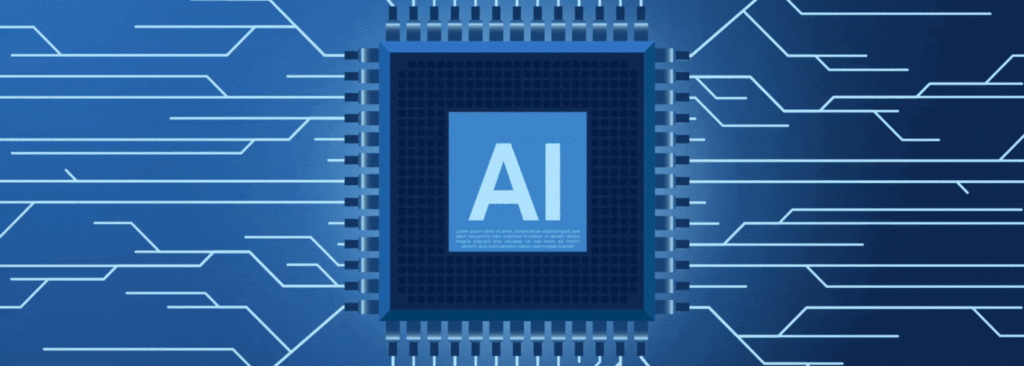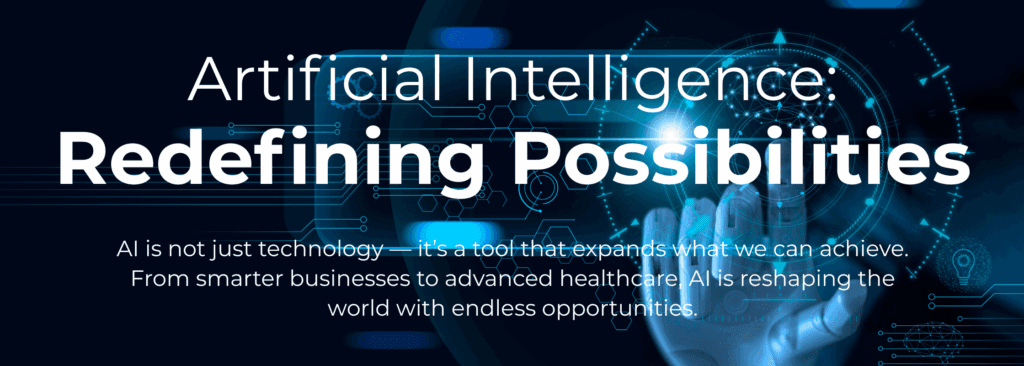The Beginning of AI: A Brief History
AI Revolution: Transforming the World at Lightning Speed

The Beginning of AI | A Brief History: Artificial Intelligence (AI), the concept of machines simulating human intelligence, has become one of the most transformative forces of the 21st century. From personal assistants like Siri to advanced generative tools like ChatGPT, AI now touches almost every aspect of modern life. However, the path to this momentous age has been long and full of twists. This article offers a comprehensive look into the origins of AI, tracing its conceptual roots, foundational developments, and early breakthroughs.
Philosophical Foundations of Intelligence: The Beginning of AI
The quest to create intelligent machines didn’t start in the 20th century. It goes back millennia to human curiosity about thought and reason.
Ancient Greece and Logic
Philosophers like Aristotle laid the groundwork for logic, one of the cornerstones of modern AI. His syllogistic logic, a form of deductive reasoning, introduced ideas such as:
- All men are mortal. Socrates is a man. Therefore, Socrates is mortal.
Such reasoning was an early attempt to formalize how humans think and make decisions.
The Myth of Automatons
Even myths and legends spoke of artificial beings: Hephaestus, the Greek god of fire, created talking mechanical servants; the Jewish Golem was a creature brought to life from clay through sacred rituals. These tales reflected humanity’s timeless dream to create life through artificial means.

The Birth of Computational Theory
Before AI could exist, the very idea of computation had to be conceived and formalized. The Beginning of computational and AI theory in the 19th and early 20th centuries laid the essential groundwork for modern computer science and, eventually, artificial intelligence. This period marked the transition from philosophical and mechanical concepts of thinking machines to rigorous, mathematical models of computation.
The birth of computational theory didn’t immediately produce working AI, but it provided the blueprint. These foundational thinkers—Babbage, Lovelace, Turing, Shannon, von Neumann, and others—gave us the tools to move from “Can we think?” to “Can we build a machine that thinks?”

Sponsored: Revid.ai Create Viral Videos in Minutes
Their work transformed vague philosophical ideas into mathematical, logical, and physical systems capable of computation—and ultimately, intelligent behavior. Without computational theory, AI as we know it wouldn’t exist. It was the soil in which the seeds of artificial intelligence were first planted.
The intellectual jump from philosophy to computation, the Beginning of AI in the 19th and early 20th centuries.
Charles Babbage and Ada Lovelace: The beginning of AI (1830s–1850s)
Babbage designed the Analytical Engine, the Beginning of the AI mechanical general-purpose computer, and Ada Lovelace wrote what many consider the first computer algorithm. She imagined that such a machine could go beyond numbers, predicting the modern idea of software.
Alan Turing (1936–1950)
Alan Turing revolutionized computation and AI. His 1936 paper, “On Computable Numbers,” proposed the Turing Machine, a theoretical device that remains the foundation of computer science.
In 1950, he posed the famous question: “Can machines think?” and introduced the Turing Test to evaluate a machine’s ability to exhibit intelligent behavior indistinguishable from a human’s. This idea became a philosophical and technical benchmark in AI. That is, The Beginning of AI: A Brief History

Sponsored: Invideo Idea to YouTube video
The Dawn of Artificial Intelligence (1950s)
The term “Artificial Intelligence” was coined in the mid-20th century, marking a new era.
Dartmouth Conference (1956)
Often considered the official Beginning of AI: A Brief History, the Dartmouth Summer Research Project on Artificial Intelligence was organized by John McCarthy, Marvin Minsky, Nathaniel Rochester, and Claude Shannon.
In the proposal, they wrote:
“Every aspect of learning or any other feature of intelligence can in principle be so precisely described that a machine can be made to simulate it.”
This statement set the tone for AI’s goals for decades.
Early Programs
- Logic Theorist (1955): Developed by Allen Newell and Herbert A. Simon, it proved mathematical theorems and is considered the first AI program.
- General Problem Solver (1957): Designed to solve a wide range of problems using heuristics.
Symbolic AI
Early AI used symbolic reasoning, also known as “good old-fashioned AI” (GOFAI), based on logical rules and symbols. It worked well in constrained environments but struggled with ambiguity and perception, two critical aspects of real-world intelligence.

The Boom Years (1956–1974)
The optimism of the 1950s turned into a flurry of government and academic funding during the 1960s.
Government Investment
DARPA (Defense Advanced Research Projects Agency) began funding AI research, believing it had military potential. Projects included:
- SHRDLU (1970): A program by Terry Winograd that could interact with objects in a virtual blocks world using natural language.
- ELIZA (1966): A chatbot by Joseph Weizenbaum that mimicked a Rogerian therapist using keyword matching, surprising many users with its apparent “understanding.”
Limitations Appear
Despite the hype, early AI couldn’t scale. Symbolic systems required exhaustive rule-writing and failed in messy real-world environments. Language translation and vision systems floundered. Disillusionment set in.
The First AI Winter (1974–1980)
By the mid-1970s, government support waned as progress stalled. This period of reduced funding and interest is known as the AI Winter.

Sponsored: Fliki Turns Ideas into videos with AI voices
Challenges:
- Symbolic AI failed at common-sense reasoning.
- Processing power and memory were limited.
- The cost of programming rules was too high.
Governments and investors concluded that AI had overpromised and underdelivered.
Expert Systems and a Revival (1980–1987)
AI made a comeback in the 1980s, driven by a new idea: Expert Systems.
What Are Expert Systems?
These systems encoded the knowledge of human experts in rule-based programs. A key example:
- XCON: Used by Digital Equipment Corporation (DEC) to configure computer systems.
They were commercially successful in fields like medicine, geology, and finance.
Key Technologies:
- Knowledge engineering: Extracting expert knowledge into usable formats.
- Rule-based inference engines: Systems that drew logical conclusions from a base of facts.
However, they too had limits: they were brittle, hard to update, and didn’t learn from data.
The Second AI Winter (1987–1993)
The boom in Expert Systems fizzled as:
- Maintenance became costly.
- Systems couldn’t adapt to changing conditions.
- Hype again outpaced reality.
This led to the second AI winter, with a collapse in funding and interest. Many companies abandoned AI research altogether.
The Rise of Machine Learning (1990s–2000s)
The 1990s marked a shift in focus: from rule-based systems to data-driven learning.
Machine Learning Emerges
Rather than programming every rule, Machine Learning (ML) allowed computers to learn from experience. Key developments included:
- Decision trees, support vector machines, and Bayesian networks.
- Renewed interest in neural networks, thanks to improved algorithms and computing power.
IBM’s Deep Blue (1997)
A landmark moment: IBM’s Deep Blue defeated world chess champion Garry Kasparov, proving machines could match (and beat) humans in complex strategy.
The Internet and Big Data
The explosion of data in the 2000s from the web, smartphones, and sensors gave AI new fuel. Algorithms could now learn patterns from vast datasets—something impossible in the rule-based era.
Deep Learning Revolution (2010s–2020s)
A breakthrough came with Deep Learning, powered by artificial neural networks modeled loosely on the brain.
Breakthroughs
- ImageNet (2012): A deep neural network called AlexNet dramatically improved image recognition, reducing error rates from 26% to 15%.
- Speech recognition, machine translation, and autonomous driving have advanced rapidly.
Notable Milestones
- AlphaGo (2016): Developed by DeepMind, it beat Go champion Lee Sedol, using deep learning and reinforcement learning.
- GPT-2 to GPT-4 (2019–2023): OpenAI’s large language models (LLMs) demonstrated human-level capabilities in text generation, reasoning, and even coding.
These tools marked the beginning of general-purpose, usable in education, medicine, law, marketing, and beyond.

The Modern Era and Future Outlook
Today, AI is ubiquitous. From facial recognition in smartphones to predictive algorithms in finance and healthcare, it is reshaping every field.
AI in the 2020s
- Generative AI: Tools like ChatGPT and Midjourney generate human-like text, art, and music.
- Natural Language Processing: AI understands and interacts through human language.
- Self-supervised learning: Reduces reliance on labeled data, allowing more efficient learning.
Ethical Concerns
As AI grows more powerful, so do questions about:
- Bias and fairness
- Job displacement
- Surveillance and privacy
- Autonomy in military use
Governments and companies are now working to regulate AI, ensuring it aligns with human values.
Conclusion
The story of the Beginning of AI is one of persistence through hype and disappointment, vision and setbacks. From symbolic logic to deep learning, from Turing’s theoretical ideas to GPT’s practical wonders, the journey of AI has been a testament to human ingenuity.
We stand at a historical moment—what began as a dream to simulate intelligence is now reshaping society itself. As AI continues to evolve, it’s crucial to understand its roots, so we can better navigate its future.
Frequently Asked Questions (FAQ)
1. Who coined the term “Artificial Intelligence”?
The term “Artificial Intelligence” was coined by John McCarthy in 1956 during the proposal for the Dartmouth Conference, which is considered the birth of AI as a field.
2. What was the first AI program?
The first widely recognized AI program was the Logic Theorist (1955), created by Allen Newell and Herbert A. Simon. It was capable of proving mathematical theorems from Principia Mathematica.
3. What is the Turing Test?
The Turing Test, proposed by Alan Turing in 1950, is a method of evaluating whether a machine can exhibit intelligent behavior indistinguishable from that of a human.
4. What caused the “AI winters”?
There were two major AI winters (mid-1970s and late 1980s) caused by high expectations, underwhelming results, lack of computational power, and the failure of symbolic AI to scale to real-world complexity. These led to reduced funding and interest in the field.
8. Who developed AlphaGo, and why was it important?
AlphaGo was developed by DeepMind, a subsidiary of Google. In 2016, it defeated world Go champion Lee Sedol, demonstrating AI’s ability to handle highly complex and intuitive decision-making tasks.
9. What are large language models (LLMs)?
Large Language Models, like GPT-2, GPT-3, and GPT-4, are advanced AI systems trained on massive datasets to understand and generate human-like language. They are used in chatbots, content creation, and more.
10. What are the ethical concerns surrounding AI today?
Major concerns include:
- Bias and discrimination in AI decision-making
- Job displacement due to automation
- Privacy violations through surveillance
- AI misuse in warfare or misinformation
Ethical and responsible AI development is a growing field focused on addressing these issues.
11. How has AI evolved from the 1950s to today?
- 1950s–1970s: Rule-based systems and symbolic reasoning
- 1980s: Expert systems boom
- 1990s–2000s: Rise of machine learning
- 2010s–2020s: Deep learning revolution and generative AI
Today’s AI is more data-driven, adaptive, and capable of human-like tasks.
12. What is the future of AI?
AI is expected to continue advancing in areas like:
- General intelligence
- Robotics
- Healthcare and biotechnology
- Education and creativity
